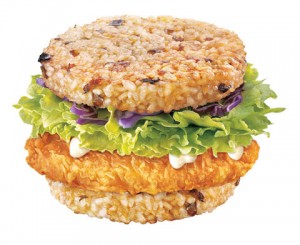Customers in emerging markets have had their personal preference influenced by cultures that are thousands of years old. With something as culturally and historically relevant as food, I understood the need for food giants such as McDonalds, Kit Kat and KFC to create new recipes or customize current ones to fit the taste preference of it’s local market. It has never considered my mind that Listerine would actively increase R+D so that it can fulfill the needs of its global customers.
A McRise (rise patty) burger from the McDonald’s in the Philippines. (Google Images)
There are many brand name products with much historic legacy that brand renewal and reinvention is seen as unnecessary. I presumed that with Listerine’s history and US market dominance, there will only be varieties on the product packaging.
Listerine proves that a basic product such as a mouthwash, that really needs to get a simple job done, a job that may be universally done the same way still needs to have variety in order to meet the needs of a diverse customer base. It is also a survival model. Globalization is not going to lead to a successful world domination if the exotic customers are overlooked.
With the changing macro-environment of USA and the change in consumer behaviour, Listerine (like many other brands) were forced to innovate. Should innovation and creativity be an active pursuit, even for a product that really needs 4 ingredients to do the job it promises? Should innovation be only preserved in a face of a sudden change? Does the necessity of the product in the daily lives of customers influence the need for a product to be continuously evolving and offer many varieties?
Works Cited List
Abrams, Rachel. “Adapting Listerine to a Global Market.” The New York Times. The New York Times, 12 Sept. 2014. Web. 08 Oct. 2014.
